deposit bank
deposit bank
High Street
 The
beginnings of
the Deposit Bank
in
High Street
were outlined by
Daniel Vickery
in 1856 as
follows -
The
beginnings of
the Deposit Bank
in
High Street
were outlined by
Daniel Vickery
in 1856 as
follows -
"A safe depository for the poor man's savings was long the object of public solicitude; and at last, the Government taking the matter in hand, brought a bill, or bills, before Parliament, which established, under very strict regulations, what are now called Savings' Banks, all over the country. This kind of bank was first established in Yeovil about the 11th March, 1818, Mr Boucher, bookseller, being appointed first Actuary. His business was carried on in the premises lately occupied by Mr Singleton, adjoining the Choughs Hotel. Mr Porter, bookseller, afterwards became Actuary, who removed his shop and the bank to the premises now occupied by Mr Custard, bookseller. On Mr Porter's removal, Mr Custard was appointed to the office. Previous to this, the trustees, in the year 1838, erected the present handsome building, on premises then occupied by Mr Hull, glover, at a cost of about £1,000."
In fact John Totterdell Boucher and William Porter were partners in a booksellers and stationers business. The partnership was dissolved in 1827 and Boucher relocated to Burnham, Somerset. At this time William Porter became the bank's second Actuary.
Wealthy glove manufacturer George Mayo played a large part in founding the first Yeovil Savings Bank and was its Chairman in 1839 when its new premises were opened in High Street. The Western Flying Post reporting at the time of the opening "A handsome building, three storeys high, mostly in the Grecian style, with balcony, portico and balustrade." The building was designed by Bennett and built by Churchouse, both Yeovil men.
The published accounts of depositors and deposits, up to the 31st December 1855, show the number of depositors (including 60 societies,) to be 1,536, and the deposits standing in their several, names, as amounting to £45,413 19s 7d." (Just short of £30 million at today's value).
From 1879 until 29 May 1892, this was the premises of chemist, wine merchant and grocer Frederick Warren Smith.
In the 1980s the building was the premises of Lennard's boot and shoe shop and more recently is the premises of a jeweller.
The following description is from the Somerset Historic Environment Record -
Shop, with offices over, 1838. Ashlar ham stone, with flat roof behind the parapet. 3-storeys, of 3-bays, with a modern shopfront at ground floor level spanning between 2-fluted Doric attached columns (photograph above), a stone cornice moulding over the fascia; to first floor a central 2-sided oriel window with plain sashes, seated on a projection of the cornice and crowned with a anthemion acroteria, and flanked by 2-plain sash windows in architraves, with cast iron balcony frets between low stone piers capped with anthemion ornament; A stone band at oriel cornice level divides off the 3-second floor windows, 4-pane sashes set in architraves, the centre being lugged and heeled. Flat pilasters to either side terminate in a classical dentilled cornice surmounted by a parapet with some open work and a central pediment containing an incised design featuring the letters D and B.
gallery

This
colourised photograph
features in my
book 'Secret Yeovil'.
This photograph, one half of a stereoscopic pair, was taken around 1870 and looks down Hendford with High Street and the shop of Lindsay Denner at extreme left. The impressive building at right is Stuckey's Bank, facing High Street, and demolished in 1918. At centre, the three-storey building in the distance is the Three Choughs Hotel and the two-storey building to its immediate left was Boucher & Porter's premises which also served as the first premises of Yeovil's first Savings Bank of which John Totterdell Boucher was its first Actuary and his partner William Porter became its second Actuary after the departure of Boucher to Burnham.
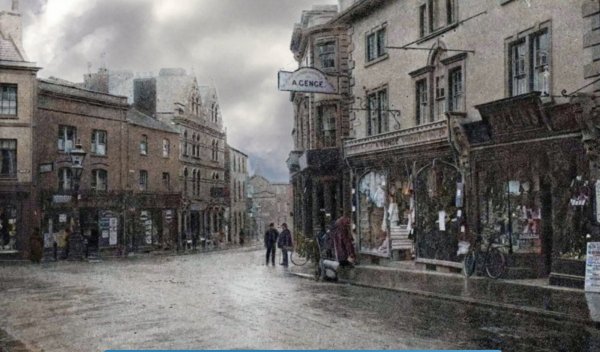
From my
collection.
This
colourised image
features in my
book 'Yeovil
- The Postcard
Collection'.
This postcard of the northern end of Hendford, postally unused, I'd guess dates to about 1895. At extreme left is just seen the edge of Denner's shop and next to it are the remaining shops before he took them over. The two men at centre are standing outside Stuckey's Bank (demolished before 1918) and between the bank building and Genge's shop is the narrow entrance to Porter's Lane (later widened to become today's Westminster Street). In fact the whole of the building at right had been the bookshop of William Porter and Henry Marsh Custard, and the second premises of the Deposit Bank.
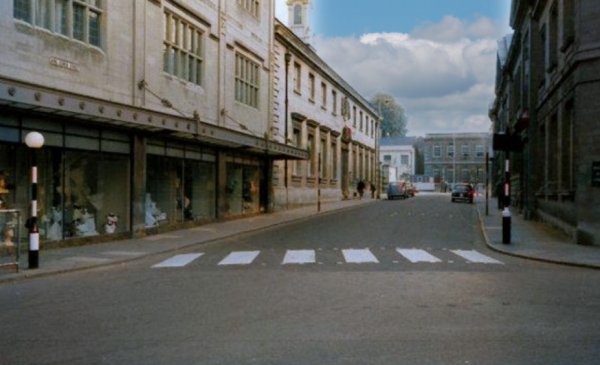
Taken from King George Street, this colourised photograph of the early 1960s (in the days when Clement White's clock actually worked) shows Gamis' store and the Deposit Bank building when it was Lennard's shop and Pearl Assurance offices over.
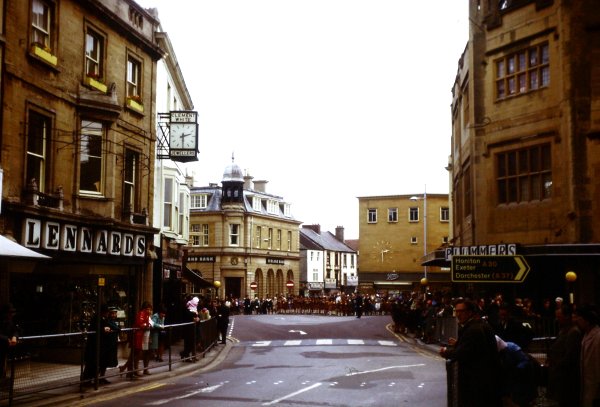
Photographed by
Doug Keyse,
courtesy of Andy
Keyse
The crowd waits for the 1968 St George's Day parade in the Borough at 2:30pm. Pearl Assurance had left the building by this time. Do you remember Plummers store on the corner of King George Street? and the clock on Boots' wall? (and when did that disappear?).
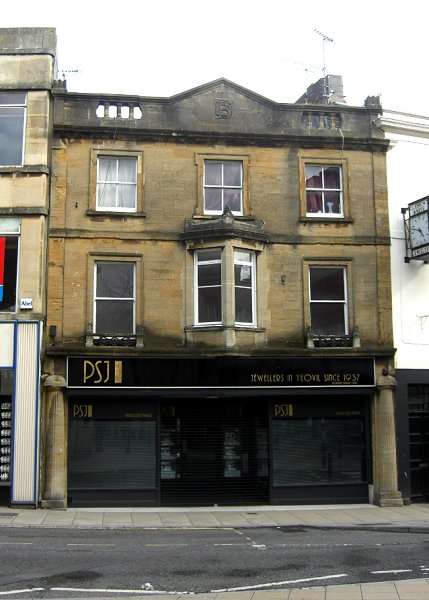
This photograph
features in my
book "A-Z
of Yeovil"
The building photographed on a quiet Sunday morning in 2013.
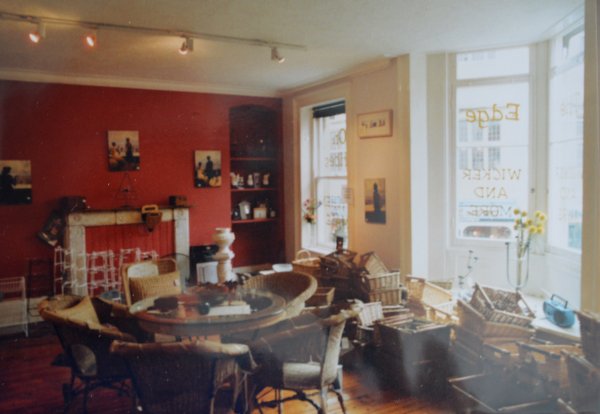
The first floor front room, with the angled bay window (above the entrance) seen at right.
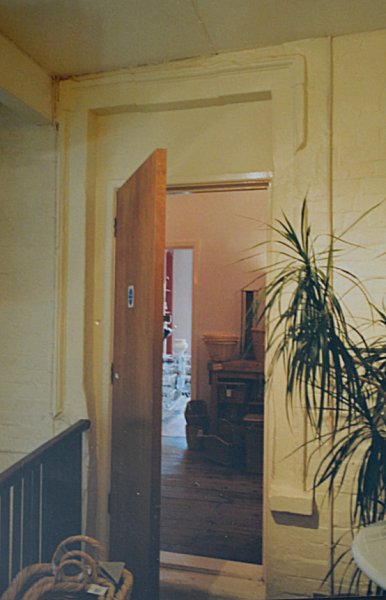
Detail of a first floor doorway surround.
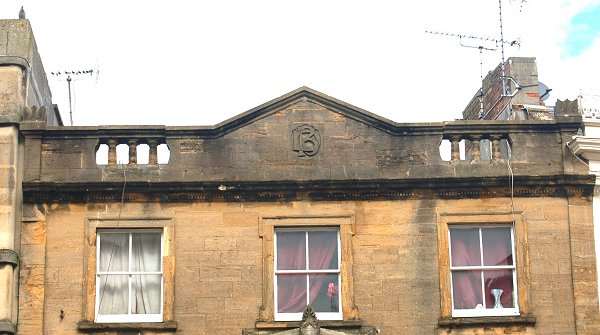
The parapet with the 'DB' monogram set within the pediment. Photographed 2013.
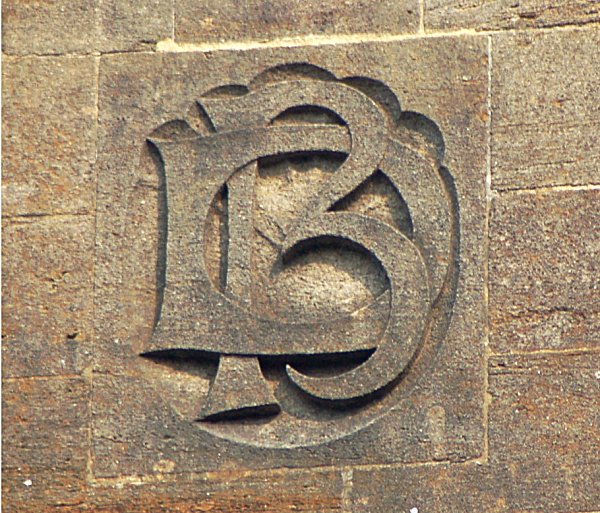
A close-up of the intertwined 'DB' monogram, photographed in 2013.
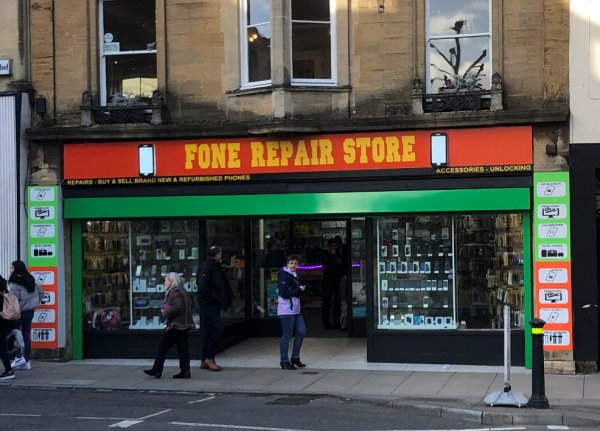
The garish and completely unsympathetic signage which, worst of all, completely covers the lovely fluted Doric columns at either side. Somebody should be deeply ashamed. Photographed March 2022.